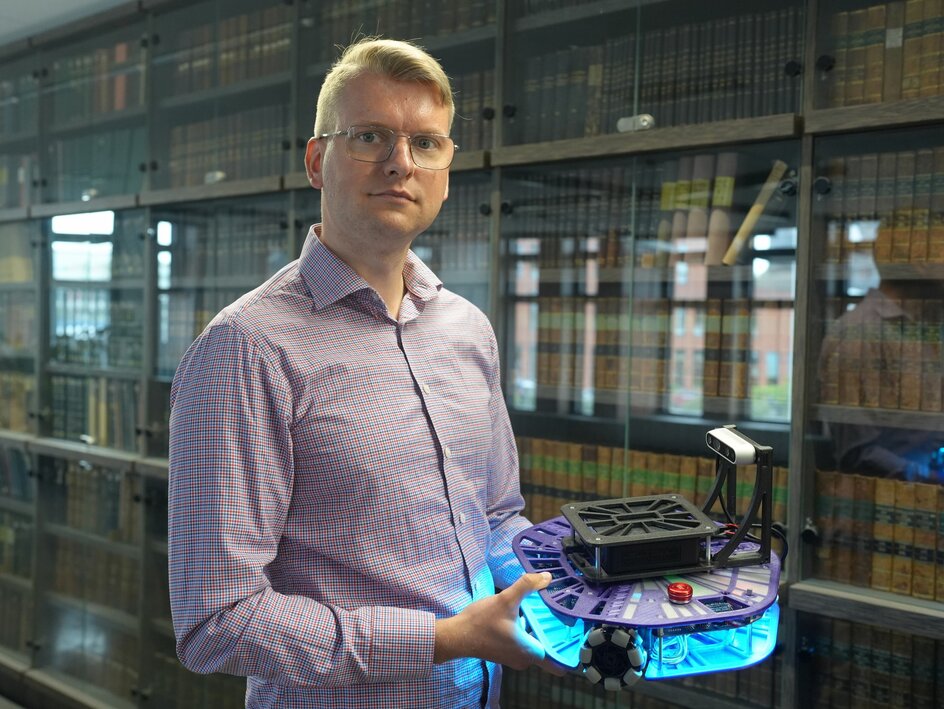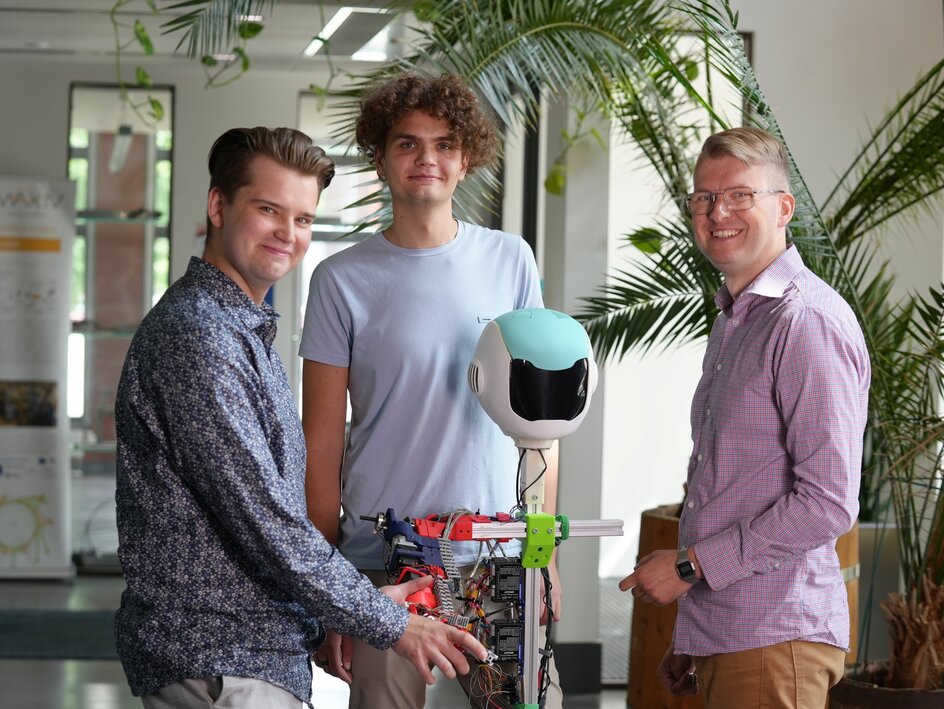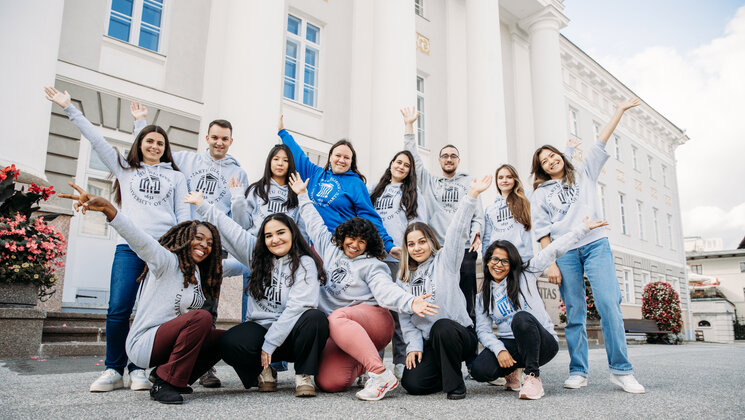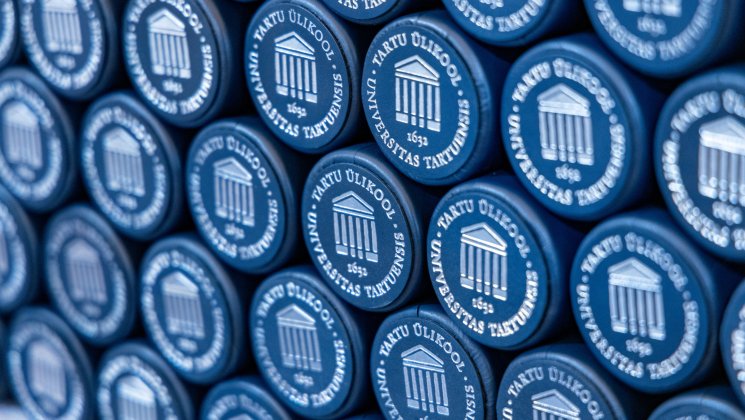Karl Kruusamäe paves the way for human-robot collaboration full of possibilities
Karl Kruusamäe, Associate Professor of Robotics Engineering at the University of Tartu, is fascinated by science at the frontiers of human knowledge: anything is possible. In his work, he is committed to developing collaboration between humans and robotics. The interview was published in full in Estonian in a new joint section by news portal Forte and universities in Estonia.
According to Kruusamäe, the impact of robotics in society is difficult to overestimate. "Thanks to robots, the welfare of Western society has increased and we are able to do things that could be life-threatening for humans. For example, we can send robots into outer space and to other planets, or investigate and eliminate dangerous situations in demining," said the associate professor. Getting robots to work has required significant advances in a wide range of scientific fields, from materials engineering, mathematics and electronics to social sciences and the humanities.
At the same time, Kruusamäe acknowledged that technology has not always been used for the benefit of people. He does not believe that this should be a barrier to technological progress and hopes that technology will help us find solutions that allow everyone to feel safe and part of society, and that this will not come at the expense of privacy.
Educational robotics, human-robot collaboration and social robotics
As one of the main leaders of robotics at the University of Tartu, Kruusamäe is currently working on several research topics, most of which are related to human-robot interaction in one way or another.

Educational robotics. The explosive growth of robotics as an embodiment of artificial intelligence in recent years has increased the demand for people who can create, develop and operate robots. "In order to provide education to these people, we at the University of Tartu have created innovative educational technology solutions that make the acquisition of robotics skills easier and more accessible. One example is the educational robot Robotont, which helps pupils and students learn the basics of robotics and the technical skills involved in using robots," said Kruusamäe.
What distinguishes Robotont from many other educational robots is that the hands-on activities involved, such as robot programming, include exactly the same tools that are used in many companies developing robotics and other autonomous systems in Estonia and elsewhere in the world. As a result, the skills learned are easily transferable to the work environment.
"I am very glad about the progress we are making in educational robotics, because we can see both in Estonia and around the world that the Robotont platform is making a real difference in promoting robotics skills among young people. In addition, we have put a lot of effort in recent years to enable the rapid creation of autonomous robots – we have a PhD thesis on the subject coming soon, which has the potential to help researchers and technology companies create human-centred robots more easily," he added.
Human-robot collaboration in manufacturing. Robots have been used in industry for a long time with the aim of taking humans out of manufacturing altogether. This means, however, that areas where automation is difficult or too costly are largely excluded from modern technological solutions, and much continues to be done by human labour alone.
It has now been realised that automated systems could also work in partnership with humans, in order to benefit from the strengths of both the human and the machine. Such an approach is called Industry 5.0 and one of its founding principles is human-centred manufacturing. "To this end, the working group and I are developing data-driven methods to facilitate production in Ida-Viru County in the coming years, based on the needs of the industry sector and with the support of the Just Transition Fund. We are also leading the creation of robotics teaching and research opportunities at the University of Tartu Narva College.
In our lab, we are exploring how to ensure that humans and robots can work together seamlessly and safely, so that a human performing a task does not have to learn to control a robot on top of it. To do this, we are using augmented reality, for example, which allows us to create personalised semi-virtual worlds to make human-robot interactions smoother," said the associate professor. In augmented reality, a human and a robot communicate with each other using visual cues that are visible only to the person wearing the augmented reality goggles.

Social robotics. There are tasks for which we do not have enough skilled human resources in our society, and which may also involve very humane tasks, such as caring for the elderly or developing children's social skills. This is where social or human companion robots can provide significant assistance.
"For some time now, we have been supporting doctors and psychologists at the Children’s Clinic of Tartu University Hospital to use human-like robots to develop children's communication skills. In this way, robots help to alleviate the shortage of experts," said the associate professor. On the other hand, the use of robots has also been shown to have a positive impact on the effectiveness of therapy: a shy child may open up more freely in the presence of a robot.
"To better support the development of social robotics in Estonia and elsewhere, we recently started a student project SemuBot, which aims to create Estonia's first humanoid robot," said Kruusamäe. SemuBot is a fully open robot platform, which means that anyone can download its blueprints and assemble their own robot, as well as rebuild it according to their needs.




